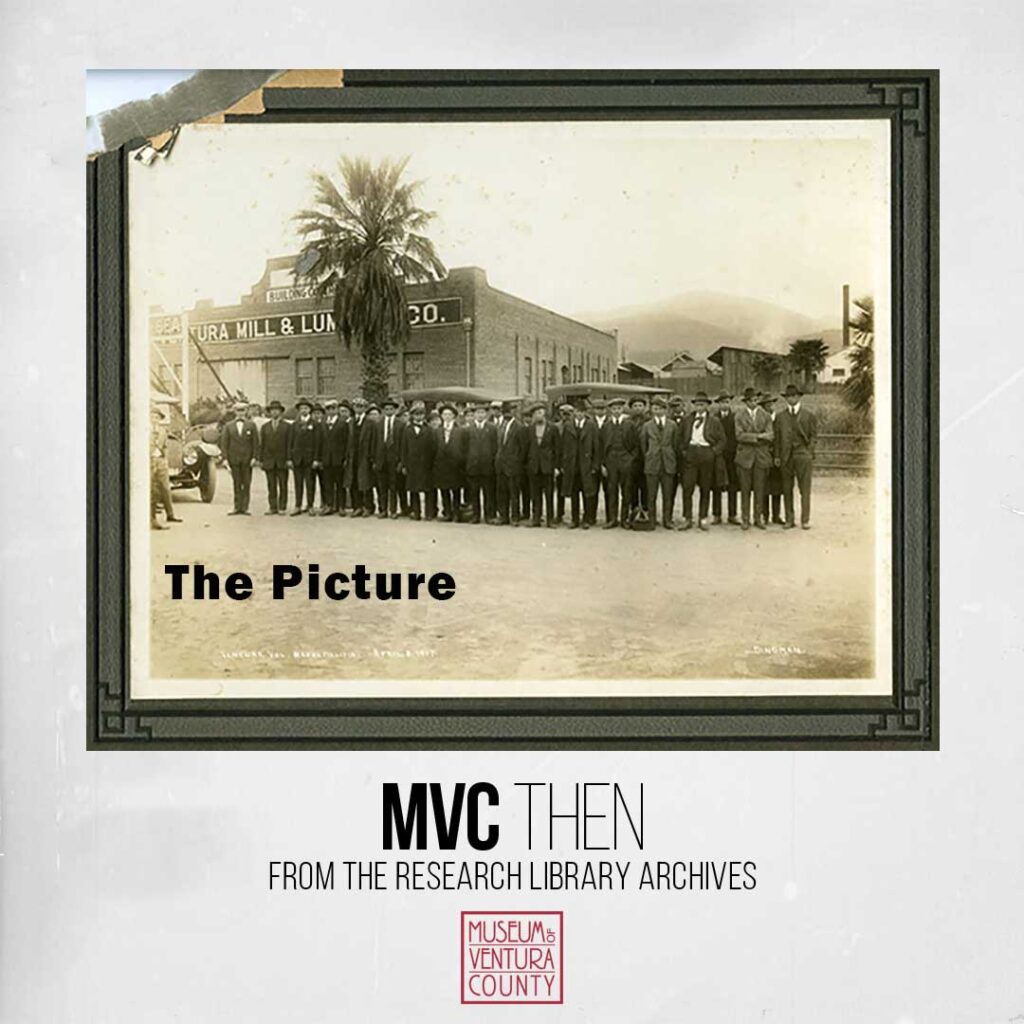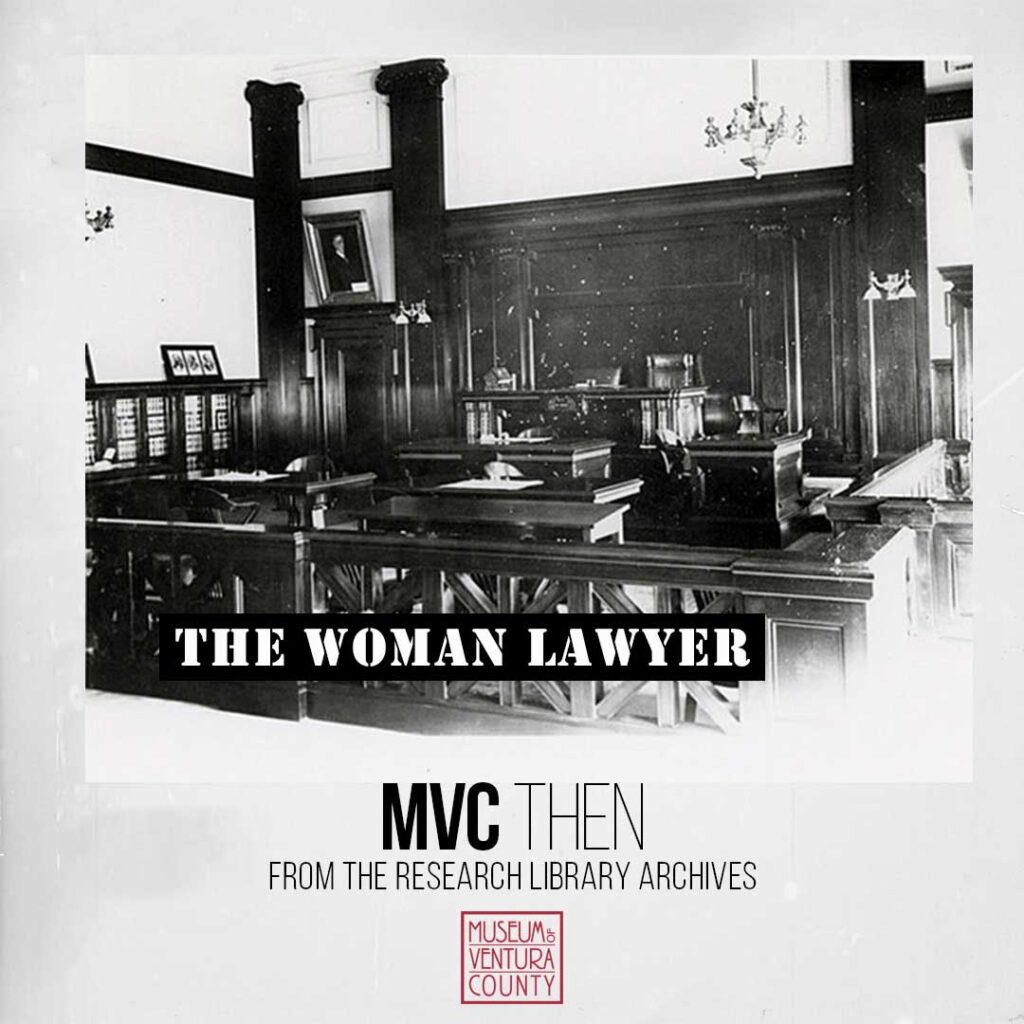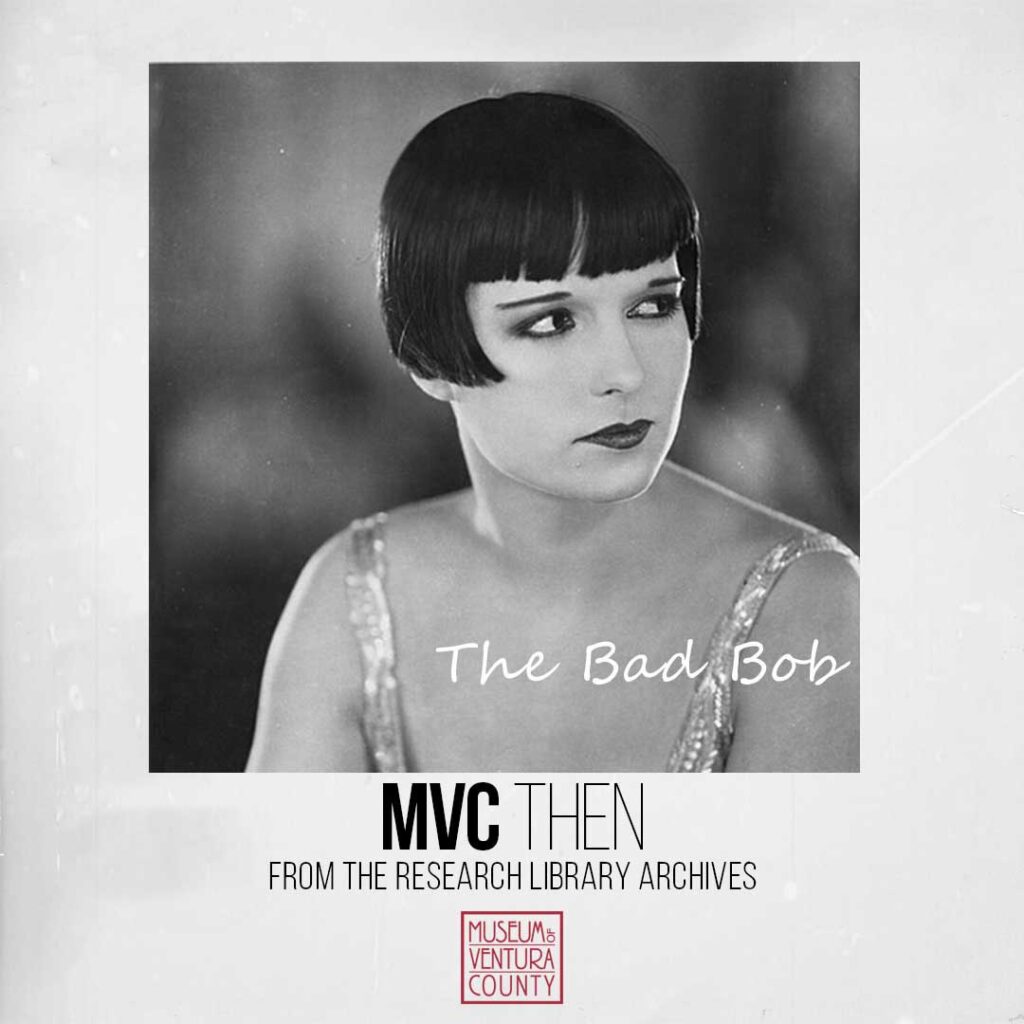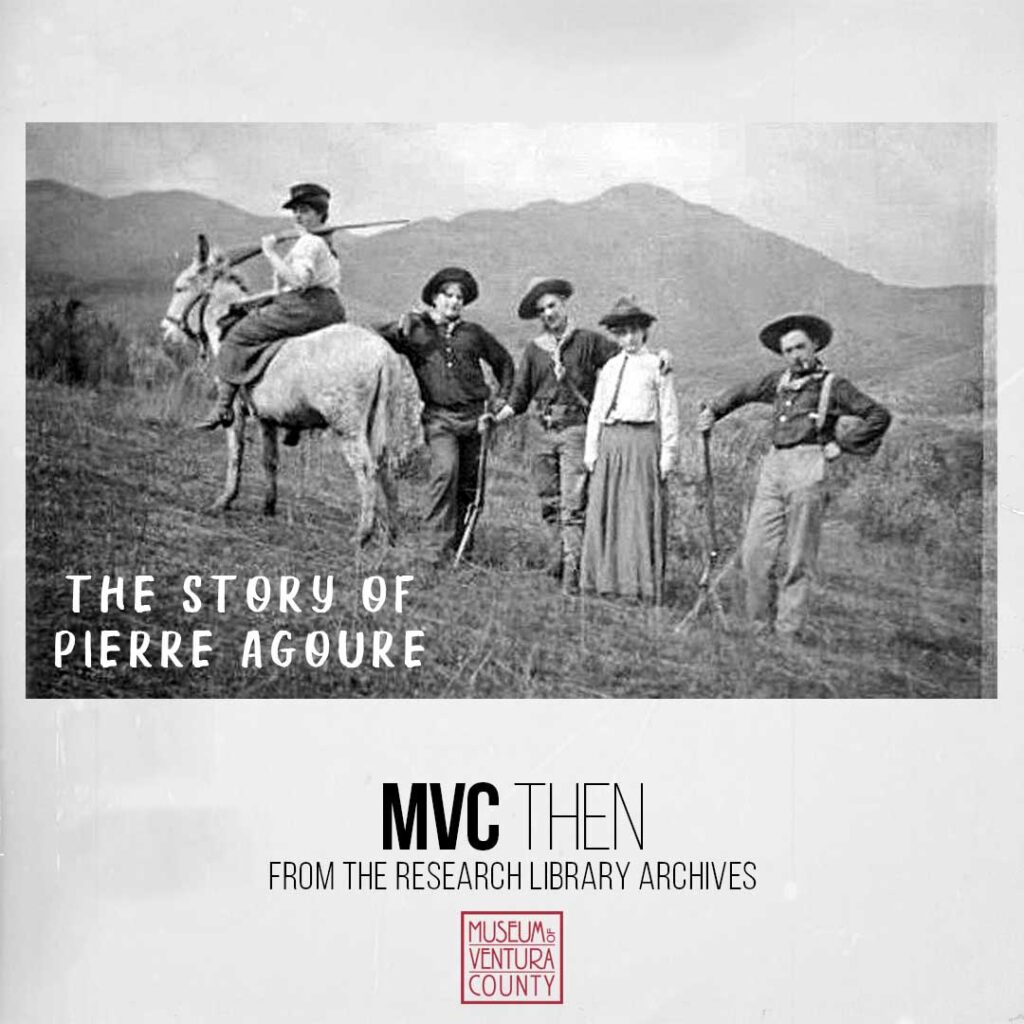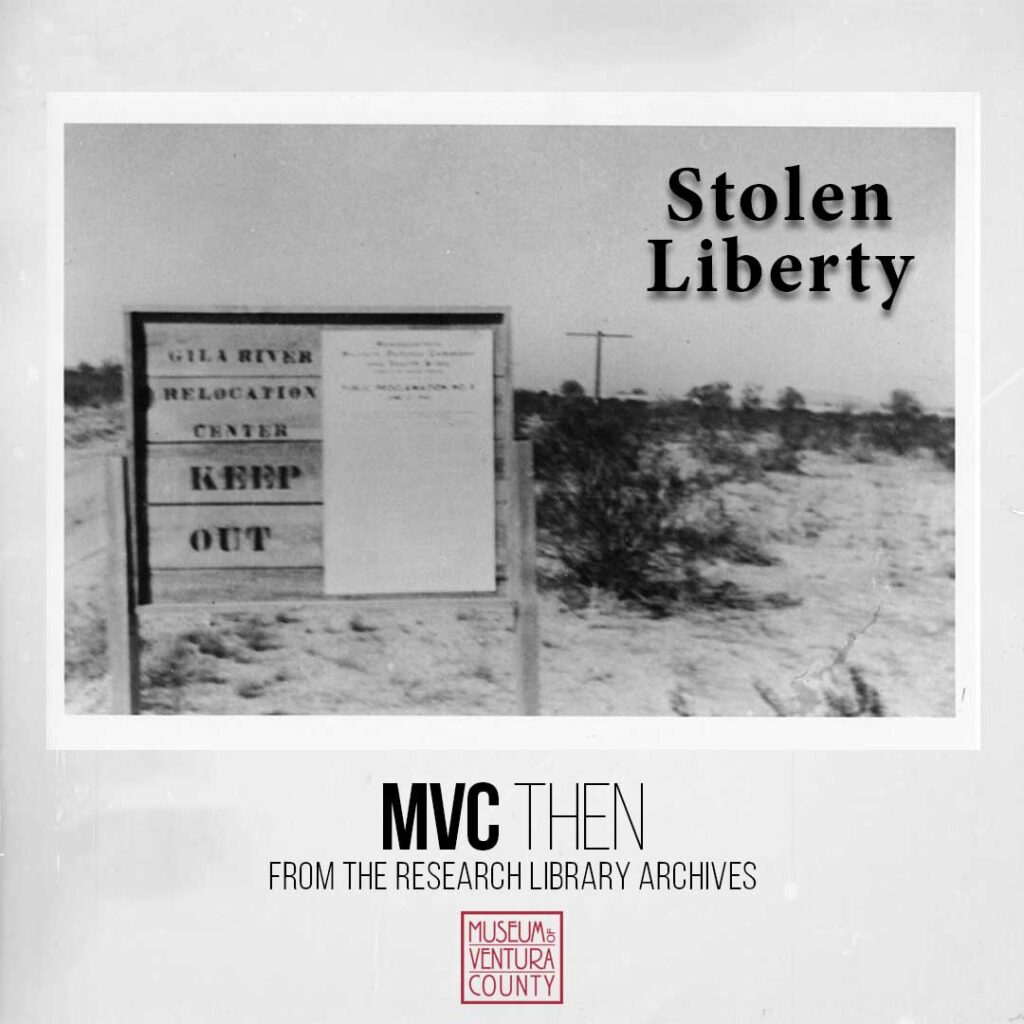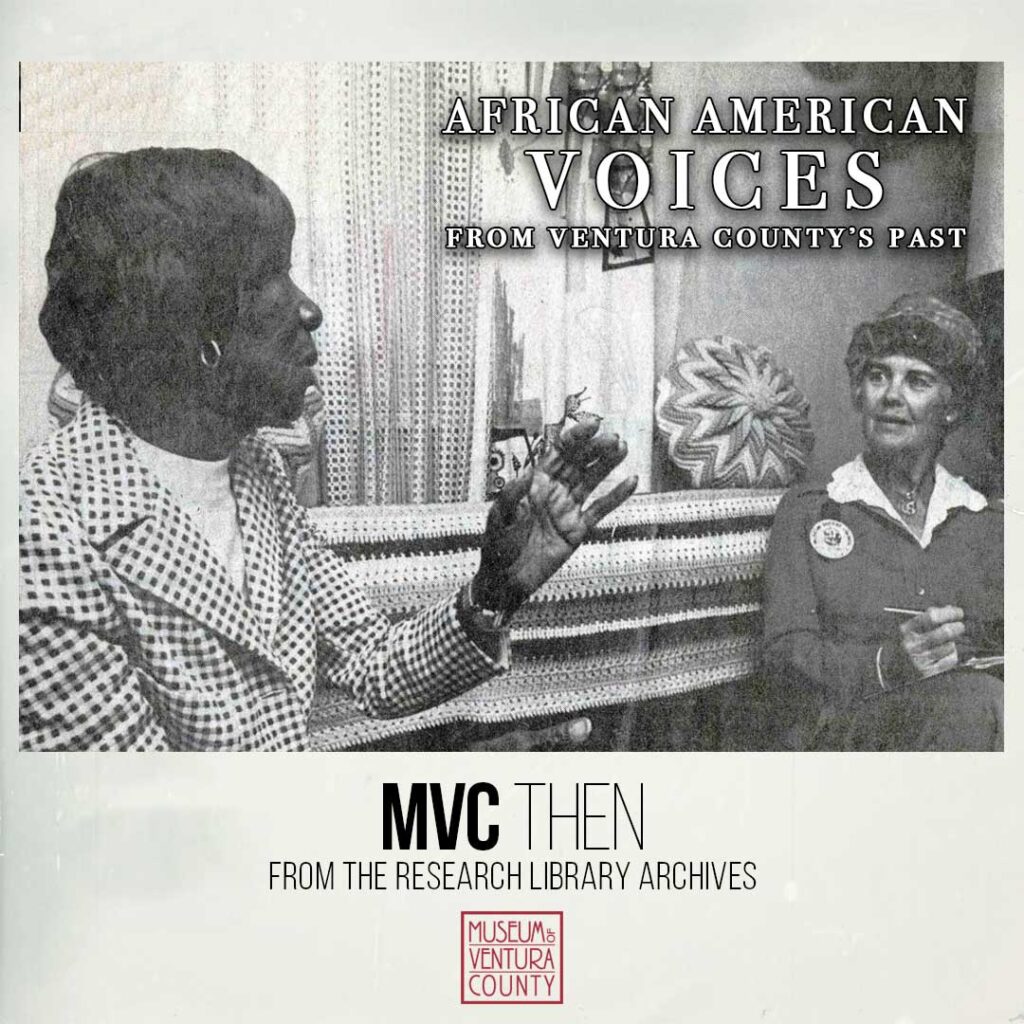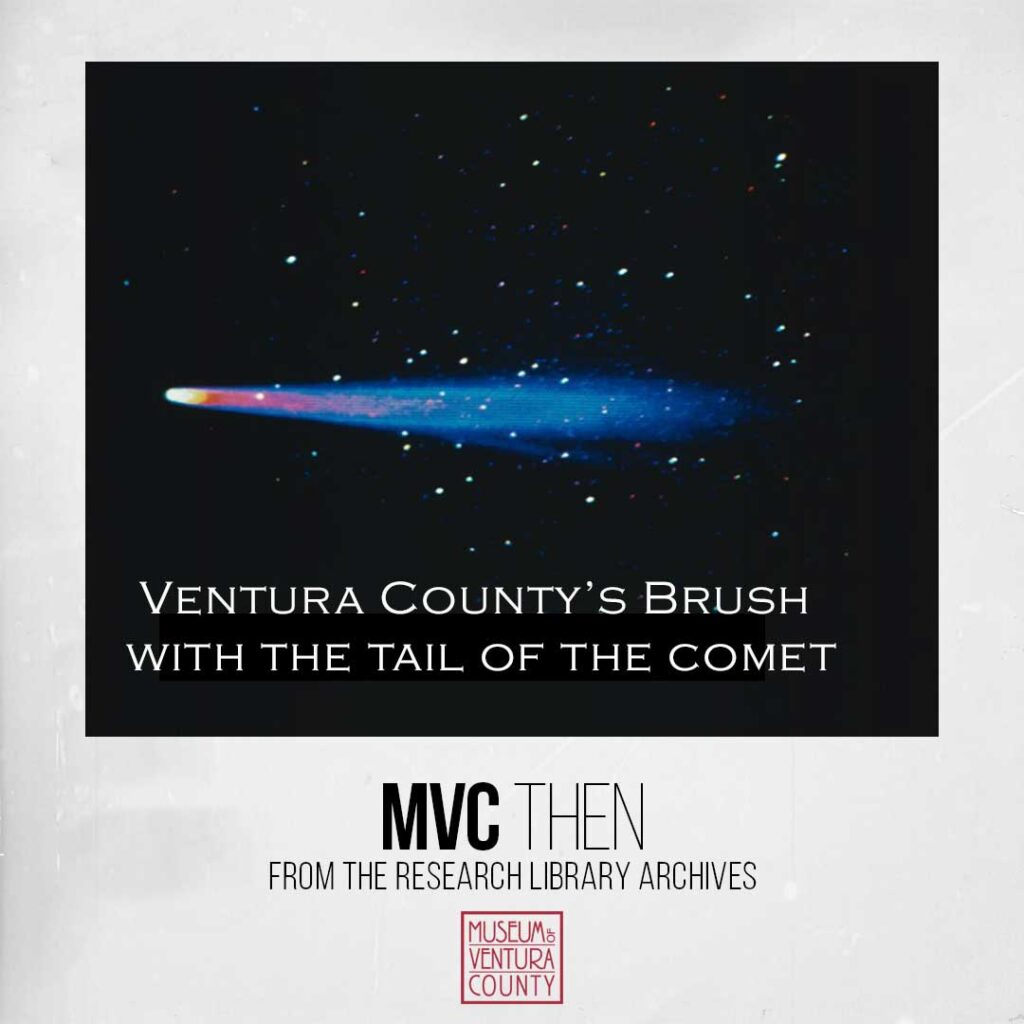
by Library Docent Volunteer Andy Ludlum
Even after 76 years, John Doughty’s memories as an 8-year-old in 1910 were as clear as if it were yesterday. The Simi Valley man said his mother, Annie, began crying and yelling when she first spotted Halley’s Comet. She fell to her knees and waved her arms up and down in prayer. She was certain the comet was a sign from God, “a cyclone that would burn a hole through the Earth.”
Read the story: Museum of Ventura County

